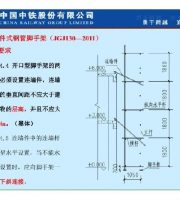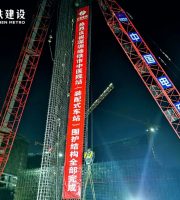We all know that scaffolding has strict requirements and standards, which is not only to ensure the normal progress of the project, but also to ensure the safety of construction personnel. Today we will take a look at the standards for setting up scaffolding ramps..
A ramp is a safe passage for construction personnel to pass up and down, which can be attached to buildings or set up on the outside of scaffolding, but the members of the passage must be set up independently. A straight slope should be used for heights below 6m, and a straight slope should be used for heights above 6m..
2. The foundation soil of the upright pole foundation must be compacted, avoiding loose foundation and uneven settlement. The foundation must be hardened together with the ground foundation of the external scaffold..
3. The spacing between upright poles, size of horizontal bars, railings, foot blocking bars, sweeping bars, and diagonal braces should be set up in synchronization with the external scaffolding in a standardized manner..
4. Wall connecting components (tie points): The tie points should be set separately. If external scaffolding is used for tie points, the corresponding position of the tie points on the inner side of the scaffolding should be added with tie points..
The construction ramp is a dedicated passage for construction personnel to move up and down, allowing them to safely walk horizontally regardless of whether they are on the operating floor, floor, or external scaffolding, thereby improving the safety and convenience of construction personnel’s walking; When necessary, the construction ramp is also a fire escape route for fire accidents..
Through the practice of multiple projects, it has been proven that construction ramps can not only improve the level of safety protection, but also greatly increase the speed of construction personnel going up and down, preventing the occurrence of safety accidents and fire hazards..




